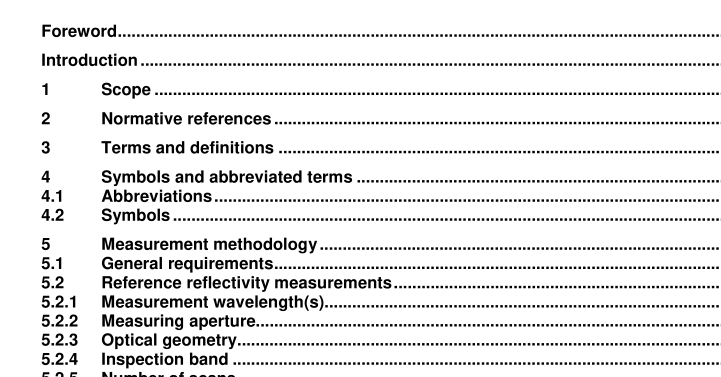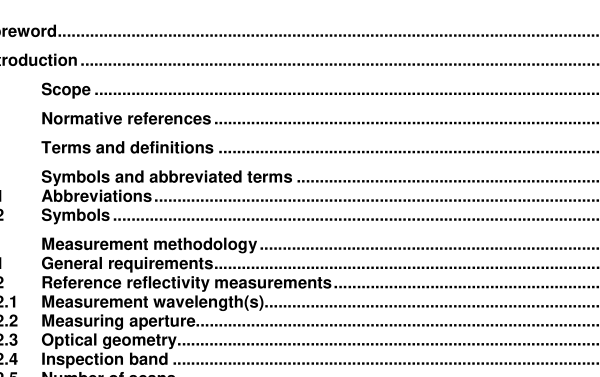ISO IEC 15416:2000 pdf download – Information technology — Automatic identification and data capture techniques — Bar code print quality test specification — Linear symbols.
3.3 decodability The proportion of the available margin (between the ideal dimension of an element or combination of elements and the relevant reference threshold) that has not been consumed by the element or combination of elements, calculated for the element or combination of elements deviating most from its ideal dimension. 3.4 decode Determination of the information encoded in a bar code symbol. 3.5 edge contrast The difference between bar reflectance and space reflectance of two adjacent elements. 3.6 element reflectance non-uniformity The reflectance difference between the highest peak and the lowest valley in the scan reflectance profile of an individual element or quiet zone. 3.7 global threshold The reflectance level midway between the maximum and minimum reflectance values in a scan reflectance profile used for the initial identification of elements. 3.8 gloss The propensity of a surface to reflect a proportion of incident light in a specular manner. 3.9 inspection band The band (usually from 1 0 % to 90 % of the height of a bar code symbol) across which measurements are taken (see Figure 2). 3.10 measuring aperture A circular opening which governs the effective sample area of the symbol, and the diameter of which at 1 :1 magnification is equal to that of the sample area. 3.11 modulation The ratio of minimum edge contrast to symbol contrast. 3.12 (n, k) symbology A class of bar code symbologies in which each symbol character is n modules in width and is composed of k bar and space pairs. 3.13 peak A point of higher reflectance in a scan reflectance profile with points of lower reflectance on either side. 3.14 sample area The effective area of the symbol within the field of view of the measurement device. 3.15 scan reflectance profile Plot of variations in reflectance with linear distance along a scan path.3.16 scan path The line along which the centre of the sample area traverses the symbol, including quiet zones. 3.17 space A light element corresponding to a region of a scan reflectance profile above the global threshold. 3.18 space reflectance The highest reflectance value of an individual space element or quiet zone in the scan reflectance profile of that element or quiet zone. 3.19 two-width symbology A bar code symbology in which symbol characters consist only of narrow and wide elements the widths of which are in a constant ratio to each other. 3.20 valley A point of lower reflectance in a scan reflectance profile with points of higher reflectance on either side. 3.21 vertical redundancy The property of a bar code symbol whereby there exist multiple possible scan paths as a result of the symbol being significantly higher than the height of a single scan line. 4 Symbols and abbreviated terms 4.1 Abbreviations EC: Edge contrast EC min : Minimum value of EC ERN: Element reflectance non-uniformity ERN max : Maximum value of ERN GT: Global threshold MOD: Modulation PCS: Print contrast signal RT: Reference threshold SC: Symbol contrast SRD: Static reflectance difference 4.2 Symbols A: Average achieved width of element or element combinations of a particular type e: Width of widest narrow element
ISO IEC 15416:2000 pdf download – Information technology — Automatic identification and data capture techniques — Bar code print quality test specification — Linear symbols






